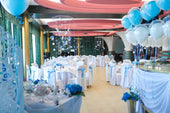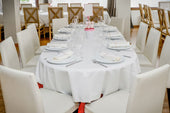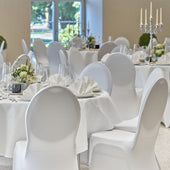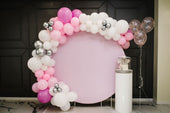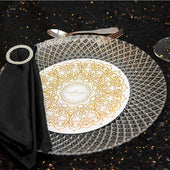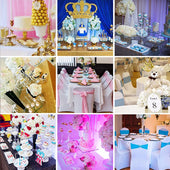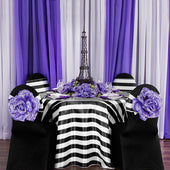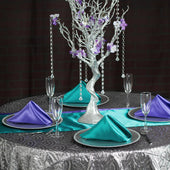So you've got the skills and the talent to plan the most stylish and stress-free events in your city, but you can't seem to reach the right audience.
Anyone can simply put up an ad for event planning services but advertising to everyone, even to those who may not have the time and interest, can be quite expensive, time-consuming, and frustrating.
Identifying your target audience and advertising to the right people might be a challenge to event planners but this is a very effective way to boost your business. Let’s talk about how to identify your target audience for your events. We'll give you a rundown on our top tips to reach your target audience and speak to boost your event.
Tip 1: Know Your Target Audience

The main key to identifying your target audience is to know as much about them as possible. Marketing experts know that the more detailed the information you have about your target audience, the easier you'll be able to reach them to promote your event.
Some themes that do not require too much money are an industrial theme, cabin, or a homey feel, to name a few.
A restaurant with a great theme can bring everything together and give customers a great dining experience.
Some of the common characteristics that are must-knows in event marketing efforts are:
- Age
- Gender
- Occupation
- Geographic Location
- Marital Status
- Education Level
- Income Level
- Ethnic Background
- Religious Beliefs
- Interest and Hobbies
-
Technological Knowledge
You can also identify your target audience by examining them through the 6 elements of a target audience.
Your target audience can be defined according to 6 types of market segments, namely: demographic, geographic, psychographic, behavioral, needs-based and transactional.
Demographic segmentation identifies your audience according to who they are, their basic information such as the details mentioned above: age, gender, occupation, and income. This is among the most common segmentation as it is easy to use and understand.
Geographic location, on the other hand, zeroes in on where your audience is located. This is best used when your potential customer's location heavily influences their purchasing decisions.
Meanwhile, psychographic segmentation identifies your target audience's personality. What are their interests and values? What are their attitudes and lifestyles? These are psychological characteristics that help you understand your target audience's preferences.
On the other end is the behavioral segment, which identifies your audience's previous behavior in relation to your brand. Are they aware of your brand and the services you have to offer? Have they previously purchased from our company? What are their purchase patterns and their product knowledge? This information allows event planners to cater to their target audience's proven patterns of consumption.
Needs-based segmentation, on the other hand, identifies your target audience according to their needs and benefits. Meanwhile, transactional segmentation looks at the spending patterns of your target audience to identify whom among them are the most valuable potential customers.
Tip 2: Look at Your Past Event Attendees and Identify Your Target Audience as an Event Planner.

Your target audience is, in essence, the target group of people that makes up your potential clients for your event of business. We've run through the basics of how to typify and identify your target audience.
Now, just who is the target audience for event planners? Event planning businesses usually cater to a specific service: maybe you specialize in weddings, parties, or baby showers. Each event type caters to a specific target market. You need to define the service you're offering, your pricing structure, and your brand philosophy in order to identify your target market and zone in on your potential clientele.
If you've launched previous events, look at past attendees to better understand who among them are your most valuable and viable potential clients. Have there been repeat clients in your past events? What are their common demographics? Where do they live, shop, and travel? What are their common interests and values? This will help you identify the characteristics of your target audience and in event audience acquisition.
If you're just starting out in the event planning business, you may want to run through your event planning checklist before throwing your next event. This will help you make sure your party runs smoothly as you start out advertising and attracting future clients.
Tip 3: Scout you Competitor's Audience. Seek Additional Information from Industry Experts or Audience Surveys.

After you've figured out your current audience, you may also want to look at what's beyond your current reach. You can opt to scout the audience your competitors are reaching. Who are they attracting and why are they able to reach them?
You can also simply opt to seek additional information from industry experts or other stakeholders in the events industry for more insight.
Another way to broaden your understanding of your target audience is to conduct Audience Surveys. This includes their basic demographics, geographical location, their interests and values, their consumption behavior, their needs and spending patterns. This is valuable information to capture your target audience's profile. It will not only help you acquire an audience but also help you manage event audience engagement.
Tip 4: Create an Audience Persona Profile

Once you've gathered enough data from our target audience and potential clientele, you can create an audience persona profile to help guide your event planning and marketing.
An audience persona profile are archetypes of your actual customers. These profiles should seem like real people with a name, a typical occupation, social life, routine, consumption pattern. These personas help you understand your target market and their needs. It will also help you speak to them effectively and advertise your events efficiently.
Audience Persona Profiles or buyer personas can be a useful tool in event planning and promotion. This can help guide you to advertise your event, from creating an eye-catching invitation letter for event guests that are within your target market, to crafting the right event decor and event activities.
Wrap-Up: Identifying your Target Audience in 5 Easy Steps
If we look at our top tips, we can condense it in these 5 quick steps on how to identify your target audience:
-
Know Your Target Audience
- Look at your past attendees and Identify Your Target Audience
- Scout the competition or simply ask colleagues in the event industry
- Survey your audience
- Create an attendee persona profile
Follow these five simple steps based on our four key tips to identify your target audience and boost your events.
Identifying your Target Audience and Engaging Them
We've gone through the basics of identifying your target audience and reaching out to them to boost your event planning business.
Keep in mind the four key ways to identify your target market. Know your audience, Look at Past Attendees and Identify Your Target Audience as an Event Planner, Scout your Competition's Audience and seek Additional Information from Industry Experts or Audience Surveys. Lastly, Create an Audience Persona Profile. These can be carried out in 5 simple steps.
If you're looking to decorate your event to impress and engage your target audience, you can never go wrong with choosing the right event linens to give a good first impression.
Get super affordable yet high quality wholesale tablecloth from CV linens. Pair them with table overlays, folding chair covers. You can choose from a wide variety of colors, styles, and materials such as our velvet tablecloth and chiffon table runner.
We offer top quality event linens in bulk at very cheap prices. You can also count on our reliable customer service and our prompt delivery.
For more event planning and decor ideas for your events, check out our website, blog, Pinterest, Instagram, and YouTube channel.



































































